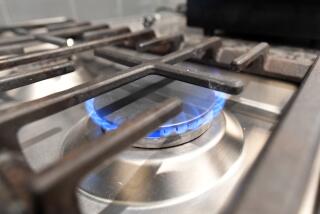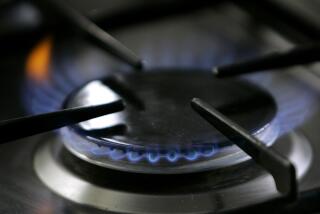Wood-Burning Stoves Gain Interest
- Share via
Question: We have a reasonably priced supply of firewood and have always liked free-standing wood-burning stoves. Are new ones more convenient to use? What features are the best to use as occasional supplemental heating?
Answer: With heating bills skyrocketing, there is interest again in wood-burning stoves. The newer ones are more convenient to use and produce more heat. With a good source of firewood and efficiency ratings of more than 70%, they are economical to use. They also continue to heat during power outages.
A free-standing wood stove can be an attractive addition to any room and any decor. There are many styles, from ornate, Old World, cast-iron, radiant stoves with brilliant porcelain enamel to contemporary pedestal models. Most can be customized with trim and decorative glass.
Another reason for interest in stoves is global warming. Burning oil or gas produces carbon dioxide gas. Burning wood is carbon dioxide-neutral. Trees consume carbon dioxide as they grow, producing oxygen. As new trees grow to maturity, they consume the carbon dioxide that the old trees produce when you burn firewood.
Most new wood-burning stoves have a one-handle control for primary air, secondary air and heat output. The larger models can produce heat for up to 12 hours on one load of wood.
In selecting a stove, consider several factors: the size of the area; whether you want a convection or a radiant-only design, or a catalytic or non-catalytic design; whether you will use it for cooking; the size of logs you have; and the styling you want.
Some of the largest free-standing stoves can heat up to 3,000 square feet of space. Most stoves will accept logs up to 18 inches long, but larger models can accept 24-inch logs. Surprisingly, the exterior is not huge.
If you plan to heat a large area, select a convection model that is designed to circulate room air through it for extra heat. It also produces radiant heat near it. A radiant-only model is good for smaller areas. A step-top model has a small, very hot top section for cooking if needed.
Optional blowers, to circulate more room air, are available and can be hidden in side panels. If the electric power goes off, the hot stove will continue to produce some natural convection flow of room air through it.
Some stoves use a catalyst that is hidden inside the flue area to burn more of the volatile gases. Catalytic models often have 10% greater efficiency than non-catalytic models that use extra combustion chambers.
*
Write for (or instantly download at https://www.dulley.com) Update Bulletin No. 459, a buyer’s guide of 12 wood-burning stove and fireplace insert manufacturers. Please include $3 and a business-size, self-addressed, stamped envelope and mail to James Dulley, L.A. Times, 6906 Royalgreen Drive, Cincinnati, OH 45244.
More to Read
Eat your way across L.A.
Get our weekly Tasting Notes newsletter for reviews, news and more.
You may occasionally receive promotional content from the Los Angeles Times.










